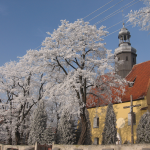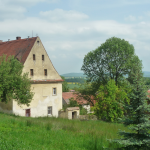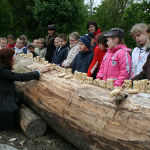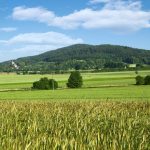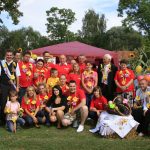Dzierżoniów, Lower Silesia, Poland
The Lower Silesean municipality Dzierżoniów is an administrative union of 15 villages, which are located in a half circle around the town with the same name. The city is an independent administrative unit, but serves as the supply center of its surrounding localities. In view of this background of this rather arbitrary union of the localities with 9,400 inhabitants in total, and above all in view of the dramatic history of multiple uprooting as a consequence of Word War II, the efforts of this only three-years old process of village renewal must be honoured.
The localities are situated in a picturesque valley at the slopes of the Eulengebirge Mountains, the Eastern part of the Riesengebirge. Three quarters of the municipality’s surface, comprising 14,000 ha, are used for agriculture; approx. 1,000 full-time farms, with another 500 agricultural holdings run on a part-time basis. As a consequence, one of the most important objectives of the strategy paper for 2007 to 2013 is the design of the agricultural production area, including aspects of infrastructure such as modernization of roads for transportation and waterways and endeavors to increase the size of fields and agricultural businesses.
The basic and sustainable goal of improving quality of life based on internal resources of the region with only 57 % of the average tax income in Poland increasingly counts on local entrepreneurship with direct marketing from food production and crafts, the maintenance of the cultural heritage, especially the castle and surrounding parks as witnesses to an ever-changing history, recreational spaces and agri-tourism, strengthening of the educational institutions and growing of settlements through new developments and attraction of city dwellers to the countryside. In the year 2009, for the first time, the migration tendency could be stopped. Many infrastructure projects like roads, water pipes, water plants, Internet access, numerous new playgrounds and sports facilities or the renovation of churches and schools have been financed with EU funds. However, the inhabitants of the individual villages have also shown great commitment, displayed in their input of work hours to extend communal spaces, revive social life in form of societies and not at least the local tax of annually 4 EUR “Schulzenamtfond” for the activities of the respective village.
In view of the construction projects, the potential of presently unused structures has yet to be discovered; these former farms with their steep roofs without ledge and their narrow air pipes still give the area their distinct, unique view and, if used appropriately, could be used as new residential space or communal areas for generations. This special energy radiated by the structures deeply rooted into the landscape can be felt around the early Gothic church in Kielczyn, which houses a Maria statute, which, adorned with crop, also displays in the coat of arms of the municipality. In the sense of energy supply, it would be desirable not to take the detour over the conventional thermal networks, but rely on the local resources of the villages within the municipality Dzierżoniów: alternative, regenerative energy produced and distributed locally. This way, the strong social togetherness would have a real effect on future generations.
Dzierżoniów stands out due to for its social energy, the creation of a number of linked projects of regional importance, the maintenance of the rural traditions and structures and the increase of life standards, the level of commitment on part of the populace and a number of considerable initiatives.

